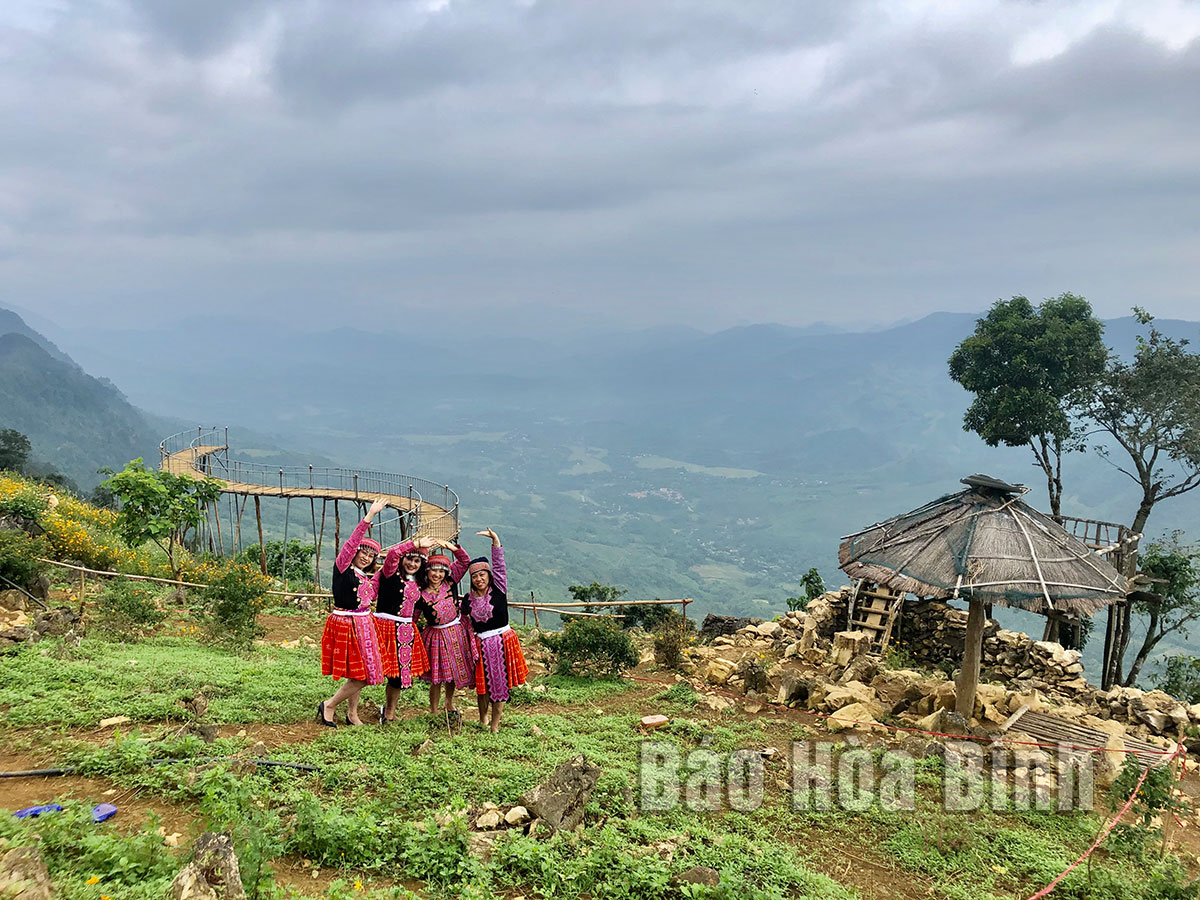(HBO) - With cool and fresh climate, beautiful natural landscapes and unique cultural identities, the Party Committee, authorities and people of Hang Kia commune, Mai Chau district have focused on developing tourism, attracting visitors to explore and experience.
Cloud-hunting
tourist destination in Hang Kia village, Hang Kia commune, Mai Chau district
attracts tourists.
Located about 40km from the centre of Mai Chau
district, Hang Kia village is mainly inhabited by the Mong ethnic minority
people. When it comes to Hang Kia, tourists immediately think of the cloud
hunting spot with beautiful and poetic scenery, shimmering with colours on an
area of nearly 1ha. For a ticket price of 20,000 VND (0.86 USD), tourists can
experience and immerse themselves in more than 10 check-in venues here.
Vang A Denh, the owner of a homestay in Hang Kia
village, said there are three households involved in community tourism business
in the village. Since starting this model, they have received the State support
in building concrete roads, cultural houses and sport grounds. The public
awareness of environment protection has been raised. They have planted flowers
along the roads to make the village more beautiful and draw more visitors.
Nguyen Van Cuong, a tourist from Hai Phong, said
Hang Kia has beautiful, majestic, and pristine natural landscapes, with a clean
and cool environment that evokes a lot of emotions in himself. The friendly
local residents still preserve their cultural customs and traditions. The
traditional dishes and unique products of the northwest mountains are also very
interesting and appealing.
Hang Kia commune now has five households
involved in tourism development, with complete infrastructure, accommodation,
dining, and experiential activities to meet the needs of tourists. In addition,
when joining the model, households are trained to improve their business skills
to serve tourists.
Sung Y Mua, owner of Y Mua homestay in Hang Kia
hamlet, said her family invested in building a traditional wooden stilt house
with a standard toilet and bathroom. The experts always remind them to preserve
the simplicity and cultural identity of ethnic people. They also attended
classes on cooking, reception and making souvenir items from bamboo, rattan,
and fabric. Thanks to that, her family has served more guests and has higher
income.
Vang A Pao, Vice Chairman of the Hang Kia
communal People's Committee, said there are five households using homestay
tourism development model and one agricultural cooperative specialised in
community-based tourism to serve visitors. Last year, the commune welcomed 234
visitors, with an estimated revenue of over 6.1 billion VND. In the first
quarter this year, it served 132 tourist groups, including 61 domestic and 71
foreign ones, earning around 3 billion VND./.



